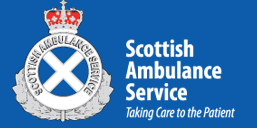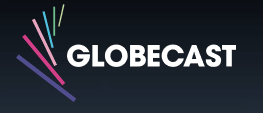USA
800 691 9120
UK
01225 704844
We use cookies on our website to analyze website usage and to help secure the website against misuse. Advertising and functional cookies are not used in our site or our web application products.
By clicking “Accept Essential Cookies Only”, you consent to us placing these cookies.
Fixed assets are a critical component of any organization, and most businesses would benefit from a comprehensive system for managing their fixed assets. Tracking using the xAssets asset management system allows fixed assets such as equipment and tools to be located in seconds, reducing costs and speeding up maintenance tasks. Implementing a barcoding system can be a useful tool for effective, accurate identification and tracking of your assets, reducing the risk of loss, and reducing accounting and tax errors. In this blog post, we discuss the best practises for barcoding fixed assets.
Fixed assets are long term physical equipment items or property which depreciate over time, such as desks and monitors etc. These assets should be recorded on your organisations balance sheet and monthly depreciation should be calculated and recorded against assets in service.
IT and fixed asset managers need to know what they have, where it is, who uses it, is it in service and does it perform it's intended role. ITAM solutions can help to track IT assets with technologies like asset discovery or even with integration to tools like Intune or SCCM which can pin a location to an asset by virtue of its IP address, but this luxury is not afforded to those who manage fixed assets and any inventory that is not network connected.
RFID is one option - but attaching RFID tags to all assets can be expensive, and equipment to read RFID tags much more so - there are circumstances where RFID can be an excellent solution, and equally there are times when it is not suitable.
This is where barcoding comes in. Barcoding is a low cost way to uniquely identify an asset, and if appropriate you can perform periodic walk-about audits using a barcode scanner to establish where the assets are at this point in time. In modern times the audits can be cached on the scanner and uploaded when the audit is complete, or where WIFI or mobile connectivity exists, each scan can update the asset record in real time.
Some of our customers place location codes in the doorway of each room. Then when conducting an audit, the audit will scan the location code, then scan each asset in the location. Our software will associated the assets to the location as part of the upload process. We can also assign locations based on proximity to GPS coordinates, so where GPS tracking is supported by the scanner, the location of the asset can be populated during the audit automatically.
Choosing the right barcode symbology is crucial to the success of your barcoding system. You may want to consider the size of the asset, the printing environment, and the readability of the code. Some commonly used examples include:
To ensure best barcoding practises, labelling assets properly is an important step in asset management tracking. Labels should be placed in a visible location and the asset and should not interfere with the asset’s functionality. If possible, a permanent barcode label is desired.
It is worthwhile considering deploying robust labels. Labels can range from simple paper stickers to permanently bonded metal tags which cannot easily be removed, and there are many options in between. Clearly the robustness comes at a cost, but the barcoding labels market has enough vendors that the pricing is competitive.
xAssets Solutions carry options for barcoding which include Handheld Barcode Scanners, Keyboard Scanners and RFID Integrations. We can integrate with existing hardware or we can supply a turnkey solution with Handheld Barcode Readers and Software fully integrated.
Each module contains a default configuration for the scanning processes which can be adapted to the customers business. Blind Audits, Walkabout Audits, Receiving, Deployment, Move and Change Processes can be covered and additional processes can be added through configuration. Each audit history is maintained and referenceable from the xAssets browser based software.

The use of handheld barcode scanners in asset management tracking is growing, as they can improve accuracy and efficiency of the process. They allow for easy scanning of assets, even in remote locations. With modern day technology, mobile phones can now be used as barcode scanners.
The use of mobile devices to scan is financially attractive, especially since most organisations already own the mobile devices whereas they might not own dedicated barcode scanners. However that cost saving has to be set against the efficiency of the process. When scanning with a mobile device, it can be quite fiddly to get a barcode to scan, whereas a dedicated barcode scanner gives a successful barcode read in a fraction of a second. Therefore we recommend testing the process before deciding to follow a mobile strategy.
A centralized database is crucial to an effective asset management system. The database should be accessible to all authorised personnel. Regular updates including location, status and history information of assets is important to ensure accuracy of tracking.
The fixed asset management system can also integrate with other systems on your network, so evidence of asset existence from ITAM systems, accounting records, purchase receipts or even from excel data files can help pull together an accurate and centralized database to form the basis of the corporate asset register.

Regular audits help to maintain accuracy and effectiveness of your asset management system. During each audit, the database should be reviewed to ensure all physical assets are being tracked and that asset information is all up to date.
Barcoding is a powerful asset management tracking tool, reducing time taken to track assets and reducing the risk of loss. By following these best practices, organizations can optimize the use of a barcoding system achieving better control over their assets.
Free instances are free forever and can show demo data or your data.































